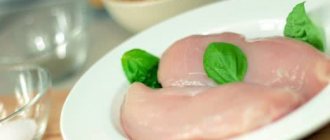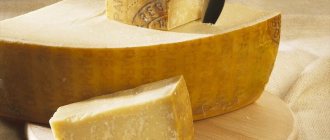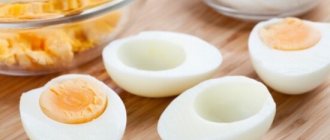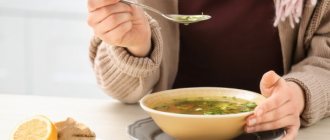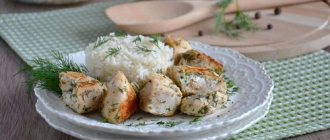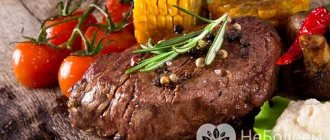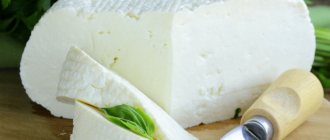The benefits of chicken breast
The beneficial properties of the product are obvious. 100 g gives us 22 g of pure protein. True, the numbers in different sources differ, but be that as it may, we only have cod, a zero-calorie source of protein that tastes like sour putty, cottage cheese, and various types of white fish and seafood. The latter often have problems with price, and if you set a goal to “eat up” at least a modest 2 g of protein per 1 kg of weight for sports purposes, the diet can cost a pretty penny.
True, the “losing weight” protein norm is slightly lower. It’s rare that anyone is recommended to eat more than 1.5 g per 1 kg of body weight, so you can do it with chicken fillet.
Everyone knows about the benefits of protein, some, however, prefer to ignore this knowledge, citing the fact that our ancestors did not count any proteins, ate their own potatoes and were slim and beautiful. Fans of such statements should take a closer look at old photographs and realize that people used to be different too. And a predominantly carbohydrate diet is not such a good way to keep your body in shape. Saving money - yes, but if you live in a modern city, the big question is what to save on, on sources of protein, or on cold remedies for the immune system that has fallen victim to nutrition.
Almost any weight loss nutrition program will use protein foods. The fact is that our body does not know how to synthesize amino acids, and is forced to obtain them from food. Therefore, you should not “remove” sources of protein from your diet; it is better, in the name of creating a calorie deficit, to abandon what only spoils your weight loss. For example, from an excessive amount of sweets and stupid snacks from unhealthy snacks. Protein-rich food allows you to avoid many problems, from chronic colds to constant hunger. If you skillfully combine protein and fibrous vegetables, and also do not underestimate carbohydrates, almost any diet can be made satisfying.
The second significant advantage of this product is the minimal amount of fat. It is much easier to create a balanced diet of proteins and fats if you take them from different sources. For example, if you set the goal of “eating” the protein requirement from just pork or lamb, you will end up with too much fat. But in dishes with breast, you can add as much butter or sour cream as you need to ensure that the diet is balanced.
The third is the ease of preparation. Chicken fillet, if cut into thin strips, can be cooked in water in 10 minutes. A splash of lemon juice, vegetables of choice, some herbs and soy sauce, and your meal is ready. In addition, chicken breast is quite easy to freeze and can be stored for a long time. Another thing is that fresh is healthier, but life sometimes makes its own adjustments.
Protein content of chicken breast
Raw chicken contains about 23.5 g of protein (B) per 100 grams of product. This figure is directly dependent on the quality of the raw materials. Cheaper birds are injected at factories with special compounds that increase the weight of the product due to the injected liquid. In this case, the B content per unit of unprocessed white meat is reduced.
However, meat is rarely eaten raw, so it is much more important to know the amount of B in the finished brisket. It differs slightly depending on the cooking method. The approximate content of B in chicken breast per 100 g is presented in the table:
| Method of cooking chicken | Content B per 100 g of finished product |
| Boiled | 27,5 |
| Smoked | 24,5 |
| Steamed | 23,5 |
| Fried | 25,0 |
| Baked | 26,0 |
From the table above it follows that boiled chicken fillet is the richest. This is due to the fact that part of the liquid present in raw chicken goes into the broth during the cooking process. The amount of B in the bird itself does not change in any way (the mass does not increase, it is not destroyed during cooking). Therefore, a steamed dish contains the same volume of B as raw chicken.
How to cook non-rubbery chicken breast
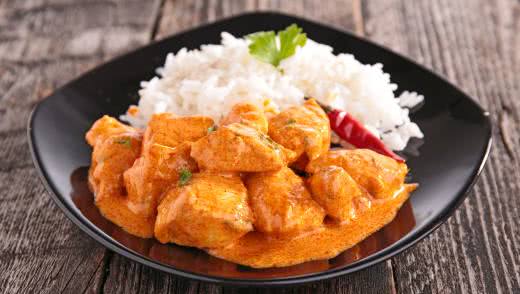
Wide circles of the sports community are tired of eating boiled breast and product soaked in kefir. Some people are so desperate that they are already making cutlets. They don't taste very good, though. And the reason for such dissatisfaction with the “classic product” is a certain, excuse me, rubbery consistency.
Others simply cook until half cooked and eat it to get rid of the problem. But there are also less controversial options:
- marinate the breast in lemon or grapefruit juice, add lemon pepper, basil, pack in a baking bag, place seam side down and cook in the oven, microwave or electric oven. Soaking in kefir also helps get rid of the “rubbery” consistency, but adds a little more calories.
Where else is protein present?
In sports nutrition, protein is a necessary ingredient, also called protein . Thanks to proteins, you can form and build muscle mass. Proteins should also be present in any dietary menu; they are very important for the body, so you need to make sure that your diet always includes foods containing them.
Proteins are found in large quantities in the following foods:
- in meats such as chicken, turkey, lean beef, rabbit and venison;
- in fish and seafood - tuna, squid, anchovies, salmon, sardines, mackerel, shrimp, etc.;
- in vegetables and fruits - bananas, avocados, spinach and soy asparagus;
- in chickpeas, peas, brown rice, soybeans, beans;
- in pumpkin and sunflower seeds;
- in different nuts - hazelnuts, walnuts and brazil, almonds.
Damage to chicken breast
First of all, diets in which chicken is the main product are quite harmful. You all know what some sports people do. They boil 800 g of breast a day, break a certain number of eggs, extract the protein, and cook it too. And then they eat it all, dividing it into 6 servings and crunching on a cucumber between meals. There is, of course, nothing wrong with this. But good is also not enough. Chicken breasts quickly get boring, and even in such an “ultra-healthy” form. A person who is not motivated by anything other than a slim figure is unlikely to endure this. And the “motivated” also usually run to eat a hamburger first thing after the end of the competition. And snack on pizza.
The second point is that not every breast is equally healthy. There is a whole class of scary stories called: “Life of a poultry farm from the inside.” Many people have friends who have ever worked in such production.
This is what they usually say:
- Poultry feed makes nails grow well. If you stir chicken food with your hands without gloves, you can achieve beautiful and strong nail plates. And fleshy cuticles. This means that not everything is in order with the bird food; something is clearly being added. This point is surrounded by a lot of legends, and almost testosterone esters are found in chicken food. It’s hard to believe in this - if you feed birds with steroids, then the prices for their meat should be proportionately higher. Still, the drugs that everyone thinks about are significantly higher than wheat and other raw materials. In addition, steroid hormones do not cause nails to grow, even if you rub them into the cuticles all day long;
- cutting of chicken carcasses takes place in unsanitary conditions. Our favorite chicken breast has to be rolled on the floor 10 times and rinsed with water the same number of times before it is packed into beautiful containers;
- expired meat does not go anywhere, it is ground into minced meat, and then semi-finished products are made from it, which are proudly sold under the name “chicken breast”.
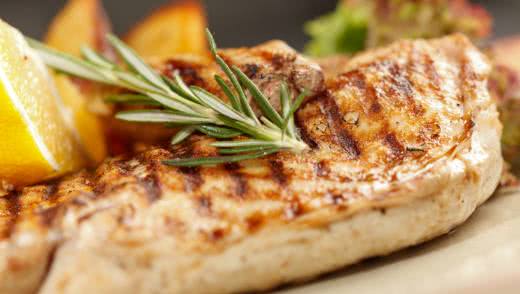
Whether all this is true or not is a very big question. In the end, you can always buy a fresh whole chicken and cut it yourself. And of course, you should refrain from purchasing expired products and deep-frozen food unless absolutely necessary.
In reality, more problems come from eating too much protein. Many people completely give up carbohydrates, but eat 2 kg of breasts a day, while being a 60 kg girl, and not a 120 kg bodybuilder. Typically, such a diet provokes skin problems, constipation and other digestive disorders, and sometimes problems with the kidneys and pancreas. But the breast is not to blame here; rather, the reason is an excessive zeal for athletic beauty.
Compound
Chicken breast has the following digital content of nutritional ingredients and nutrients:
- Proteins – 23 g
- Fats – 0.5 g
- Carbohydrates – 0.4 g
- Calorie content – 110 kcal
- Vitamins – A, C, H, PP, group B
- Minerals – sodium, magnesium, iron, potassium, sulfur, cobalt, copper, selenium and others
Why, when talking about protein, is the emphasis placed on the finished product? Because there is slightly less protein in the raw product - about 23 g per 100 g. During the heat treatment, the amount of water decreases slightly, but the amount of protein remains unchanged, respectively, the percentage in the finished meat increases.
It should also be noted that chicken breast protein is easily digestible.
Calorie content and nutritional value of boiled breast with and without skin
Almost any product can envy the calorie content of boiled chicken breast, because together with bones it is only 137 kcal without skin and 165 kcal with skin, and the meat itself (fillet) contains about 113 calories. At the same time, the amount of protein is at around 23.6 g, fat – 1.9 g, and carbohydrates – 0.4 g.
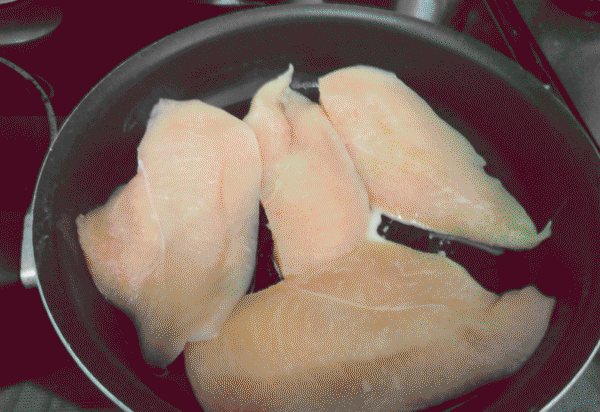
An important factor in calculating the energy value is the cooking method. For example, boiling a breast in lightly salted water for half an hour “pulls” calories from it, since all the fats remain in the broth. This method allows you to reduce calorie content to 95 kcal.
Baking in foil or a sleeve without adding oil or steaming allows you to get dietary meat with a calorie content of up to 110 kcal. But cooking in a frying pan in sunflower oil and frying a crispy crust, on the contrary, increases the calorie content to 200 kcal.
Daily consumption rate
Proteins are an important part of a person’s complete nutrition, because the body is not able to synthesize them on its own. The difficulty is that, unlike fats, proteins are not “deposited” anywhere, therefore, they must be supplied every day.
The minimum amount of protein for a healthy person is 40 g per day. In terms of chicken breast, this is about 170 g of boiled meat without skin and bones.
Moreover, the body can absorb only half of the serving at a time, so it is better to distribute the daily norm evenly into two doses.
And the maximum daily protein intake ranges from 90 g for ordinary people and up to 110-120 g for athletes, which is equivalent to 375 g and 500 g of boiled chicken breast, respectively. You should not exceed these indicators, since excess protein leads to poisoning of the body and disruption of the transport of vitamins.
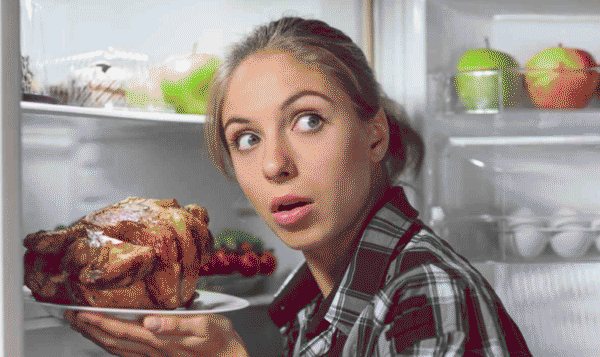
If you want to calculate your ideal protein intake, use these simple tips:
- in the absence of physical loads per 1 kg of body weight you need to consume 1.2 g of protein;
- moderate physical activity increases the need to 1.6 g per day;
- playing sports more than 3 times a week or a protein diet requires 1.8-2 g of protein per 1 kg of body weight.
Then you can calculate the amount of chicken fillet yourself based on your body’s needs and weight.
